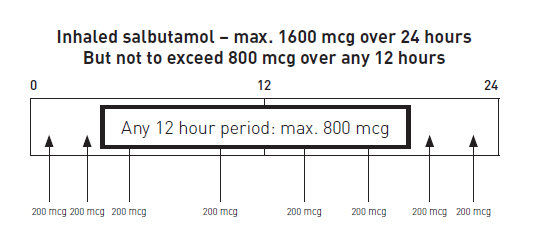DISCLAIMER: This content is NOT being updated and is only current as of the publication date.
USADA is one of more than 660 signatories to the World Anti-Doping Code, which was created to harmonize anti-doping rules and regulations globally. As part of the Code, the World Anti-Doping Agency (WADA) publishes an annual Prohibited List of Substances and Methods that includes three main categories – prohibited at all times, in-competition only, or in particular sports, as well as specific subcategories within each main category.
WADA publishes this list by October 1 each year, giving athletes and support personnel three full months to ensure that they are educated on and compliant with the updated List before it goes into effect on January 1 of the new year.
In 2018, there are a number of changes that athletes need to be aware of, and the main changes are highlighted below. For more information on how a substance gets added to the prohibited list, click here.
Changes to IV Infusion Rules
With the 2018 Prohibited List, the allowed volume and timing of intravenous infusions of permitted substances will double to no more than a total of 100 mL per 12-hour period. More specifically, IV infusions and/or injections of any substance in excess of 100 mL per 12-hour period are prohibited at all times, except for those legitimately received in the course of hospital treatment, surgical procedures, or clinical diagnostic investigations.
**If a prohibited substance is administered intravenously or via injection, a TUE is necessary for this substance regardless of whether the infusion or injection is less than 100mL.
Starting in 2018, WADA clarified the use the language mentioned above, having changed “hospital admissions” to “hospital treatment,” and “clinical investigations” to “clinical diagnostic investigations.”
- Hospital treatment includes treatment or admission at a physical hospital named as such. TUEs are still required for infusions provided through on-site event medical services, ambulatory treatment, outpatient clinics, doctors’ or medical offices, home visits, etc.
- Clinical trials, or academic or private research projects, are not clinical diagnostic investigations.
Examples of Glucocorticoids Added
All glucocorticoids remain prohibited in-competition when administered by oral, intravenous, intramuscular or rectal routes. On the 2018 Prohibited List, WADA also provided some examples of commonly used glucocorticoids that are prohibited, including but not limited to:
- betamethasone
- budesonide
- cortisone
- deflazacort
- dexamethasone
- fluticasone
- hydrocortisone
- methylprednisolone
- prednisolone
- prednisone
- triamcinolone
Salbutamol Limits Clarified
Under the S3 Beta-2 Agonists category of the 2018 Prohibited List, the dosing parameters of inhaled salbutamol clarify that doses of salbutamol may not exceed 800 micrograms over any 12 hours. So, the maximum total combined dose of inhaled salbutamol is 1,600 mcg over any 24-period, and divided doses of salbutamol may not exceed 800 micrograms over any 12 hours.
Cannabidiol Removed from the List
Starting in 2018, cannabidiol (i.e. CBD oil) is no longer prohibited under the S8 Cannabinoids category. Synthetic cannabidiol is not a cannabimimetic; however, cannabidiol extracted from cannabis plants may contain varying concentrations of THC, which remains a prohibited substance.
Synthetic cannabinoids, e.g. Δ9-tetrahydrocannabinol (THC) and other cannabimimetics, continue to be prohibited.
Alcohol Removed from the List
Alcohol, which was previously prohibited in-competition in four sports, has been removed from the 2018 Prohibited List. Going forward, the International Federations for those four sports will be able to apply and enforce protocols for alcohol as they see fit.
Glycerol Removed from the List
In 2018, glycerol will no longer be prohibited after being removed from the S5 Diuretics and Masking Agents category of the WADA Prohibited List.
Additional Specific Examples of Prohibited Substances Were Added in Various Categories
- LGD-4033 and RAD140 were added as further examples of SARMs in 1.2.
- Deslorelin, goserelin, nafarelin, and triptorelin were added as examples of 2.1.
- Growth Hormone fragments were included in 2.3, with AOD-9604 and hGH 176-191 added as examples under 2.2.3.
- CJC-1293 was added as an example of GHRH and tabimorelin as a further example of GH secretagogue under S2.2.3.
- GHRP-1, -3, -4, and -5 were added as examples of GHRP under S2.2.3.
- Thymosin- β4 and its derivatives, e. g. TB-500, were added as examples of prohibited growth factors under S2.3.
- SR9009, a Rev-Erb-α agonist, was added as an example of Activators of the AMP-activated protein kinase (AMPK) under S4.5.1.
- 1,3-Dimethylbutylamine (DMBA) was added as an example of a Specified Stimulant under S6.b. This substance can be found in some dietary supplements.
Gene Doping Definition Clarified
The definition of gene doping has been revised to include current and emerging gene manipulating technologies, such as CRISPR/Cas9 and Targeted Genome Editing. The use of gene editing agents designed to alter genome sequences and/or the transcriptional or epigenetic regulation of gene expression with the potential to enhance sport performance, are prohibited.




